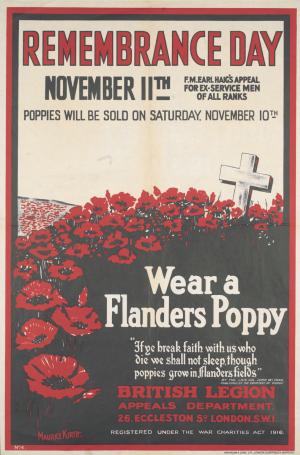I have been considering a number of topics for my second post on the Indian homefront during the Great War. Not knowing a lot about this aspect of First World War history, I thought it would be good to continue with broad areas of inquiry. I've been wondering what Indian sentiment about the war was like. How much conflict did the idea of serving in the British Army create? Coming at a pivotal time during the Indian independence movement, how did the war affect Indian civilians and those who served?
Within the topic of the Great War in India, one of the first names that appears amid the researcher's retrievals is, unsurprisingly, that of Mohandas K. Gandhi.
 |
| Gandhi, 1918. |
With his early career prior to the war currently the subject of an acclaimed production at the Metropolitan Opera, Gandhi remains a figure of fascination and admiration around the world. He is remembered for being an advocate of peaceful resistance during his leadership of the Indian Independence Movement.
By 1914, Gandhi, who trained as a lawyer in London, had galvanized the Indian civil rights movement in South Africa. It was during this time that he developed and promoted the idea of satyagraha, or peaceful civil resistance. The concept of satyagraha has many inflections: Gandhi wrote extensively about it, describing its meaning as a composite of the values of steadfastness, truth, love, and nonviolence.
Around the start of the First World War, Gandhi traveled to England. Having organized Indian volunteers as ambulance drivers during the Boer War, Gandhi again urged Indians to serve in these noncombatant positions. He returned to India in 1915 and his role as a leader of the independence movement began to coalesce around this time. The war years were extremely active ones for Gandhi: in Champaran and Kheda, he led resistance movements among peasants and farmers who struggled with hunger, unsafe and unhealthy living and work conditions, oppressive and unfair treatment by employers, and poverty further exacerbated by excessive taxation. Gandhi's Satyagraha revolutions, as these movements were called, achieved resolution between the British government and citizens, ending the crippling taxation and allowing for recovery from the famine created by the dire straits into which the farmers had been thrown, having had to grow crops for trade rather than the food they needed. The success of the Champaran and Kheda Satyagraha brought Gandhi to national and worldwide prominence.
It would be in April of 1918, when Gandhi attended a War Conference organized by the Indian Viceroy, that he made a striking departure from his earlier advocacy for noncombatant service. Vowing that he would work towards Indian combatant recruitment, Gandhi issued an appeal for service in the British Army. Though it would create controversy because of its contradiction of the nonviolence for which he had become renowned, the push for Indian recruitment was connected deeply with the Home Rule movement. It was hoped, perhaps paradoxically, that, by helping the British Army, India could delineate its own identity as a powerful and independent nation--more like an ally for England rather than some subordinate entity. There was also hope that Britain would extend independence to India in gratitude for this military service.
Gandhi's 1918 call for recruitment would remain one of his most controversial choices. It is perhaps easy, in hindsight, to question his decision to support Indian combatant service in the British Army. This moment of conflict within a conflict reflects what was an enormously volatile moment for Britain and India--one nation's appropriation of the other's people, resources, and government began to fade as the other progressed towards full independence. The course to independence was not smooth, and Gandhi's vacillations on combatant service reflect various approaches to the question of how India could re-identify itself as a nation of its own. The war seemed, for a while, to be a catalyst for that reinvention--for an unprecedented assertion of the very independence India sought through chosen service.
© Fiona Robinson
Sources and Further Reading:
Metropolitan Opera information on 2011 production of Philip Glass's Satyagraha:
Wikipedia: "Mohandas Karamchand Gandhi"
image of Gandhi in 1918:
Wikipedia: "Champaran and Kheda Satyagraha"
http://en.wikipedia.org/wiki/Champaran_and_Kheda_Satyagraha
Wikipedia: "Satyagraha"
http://en.wikipedia.org/wiki/Satyagraha
Wikipedia: "Satyagraha"
http://en.wikipedia.org/wiki/Satyagraha
About.com: "Mohandas Gandhi--Biography"
Gandhi Book Centre:
***more to follow***







